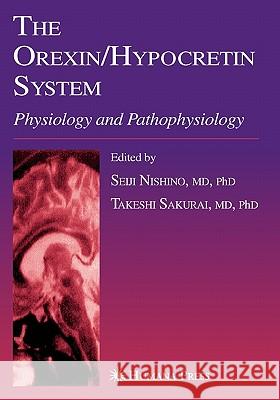The Orexin/Hypocretin System: Physiology and Pathophysiology » książka
The Orexin/Hypocretin System: Physiology and Pathophysiology
ISBN-13: 9781617375743 / Angielski / Miękka / 2010 / 416 str.
Orexin/hypocretin research began in 1998, as a result of the discovery of a new hypothalamic neuropeptide. In 1999, it was found that mutations in the orexin/ hypocretin-related genes caused a sleep disorder (narcolepsy) in dogs and mice. These findings were soon followed by the discoveries of orexin/hypocretin ligand deficiency in human narcolepsy. The finding of the major pathophysiological mechanisms of human narcolepsy resulted in its reclassification as a neurological, not a psychiatric, disorder. The - portance of early diagnosis and initiation of treatment for human narcolepsy has been repeatedly emphasized because the disease typically starts around puberty (when social and school influences become important). Orexin/hypocretin de- ciency in narcolepsy subjects can be detected clinically in cerebrospinal fluid (CSF) orexin/hypocretin measures (low CSF orexin/hypocretin levels are strongly asso- ated with narcolepsy cataplexy among various neurologic and sleep disorders). Thus, the CSF orexin/hypocretin measurements are expected to be included as a diagnostic test for narcolepsy cataplexy in the second revision of international di- nostic criteria (ICSD). This positive diagnostic test is very useful for establishing an early diagnosis for narcolepsy cataplexy, and many patients will likely receive im- diate benefits. Cerebrospinal orexin/hypocretin measurements are also informative for the nosological classification of hypersomnia. Because orexin/hypocretin de- ciency is observed in most human narcolepsy cataplexy, orexin/hypocretin repla- ment therapy is now a promising new choice for the treatment of human narcolepsy, and research in this area is actively in progress."











